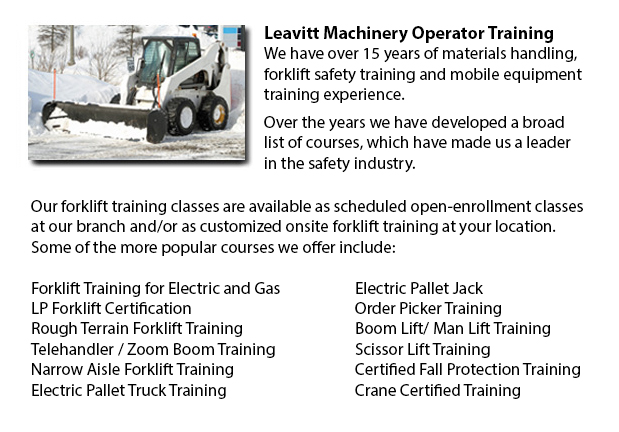
Skid Steer Ticket Kelowna - On a skid-steer loader, the lift arms are at the side of the driver together with pivot points at the back of the driver's shoulders. This makes them different as opposed to a traditional front loader. Due to the operator's closeness to moving booms, early skid loaders were not as safe as conventional front loaders, particularly throughout the operator's entry and exit. Modern skid-steer loaders at present have numerous features to be able to protect the driver like fully-enclosed cabs. Like various front loaders, the skid-steer model can push materials from one place to another, can load material into a trailer or a truck and could carry material in its bucket.
Operation
There are several times where the skid-steer loader can be used instead of a big excavator on the jobsite for digging holes from the inside. To begin, the loader digs a ramp to be utilized to excavate the material out of the hole. As the excavation deepens, the machine reshapes the ramp making it steeper and longer. This is a very useful technique for digging underneath a building where there is not enough overhead clearance for the boom of a big excavator. For instance, this is a common scenario when digging a basement below an existing house or structure.
There is much flexibility in the accessories which the skid steer loaders are capable of. Like for example, the traditional bucket of many of these loaders can be replaced with various attachments which are powered by the loader's hydraulic system, consisting of mowers, snow blades, cement mixers, pallet forks, backhoes, tree spades and sweepers. Some other popular specialized attachments and buckets consist of trenchers, angle booms, dumping hoppers, wood chipper machines, grapples, tillers, stump grinders rippers, wheel saws and snow blades.
History
The 3-wheeled front end loader was invented during the year 1957, by Louis and Cyril Keller in their hometown of Rothsay, Minnesota. The Keller brothers created this machine to be able to help mechanize the process of cleaning in turkey barns. This machinery was compact and light and had a back caster wheel that allowed it to turn around and maneuver within its own length, enabling it to carry out similar jobs as a conventional front-end loader.
The Melroe brothers of Melroe Manufacturing Company in Gwinner, N.D. purchased in the year 1958, the rights to the Keller loader. The company then employed the Keller brothers to assist with development of the loader. The M-200 Melroe was actually the result of this partnership. This model was a self-propelled loader which was introduced to the market during 1958. The M-200 Melroe featured a two independent front drive wheels, a rear caster wheel, a 12.9 HP engine and a 750 lb lift capacity. By 1960, they changed the caster wheel with a rear axle and launched the first 4 wheel skid steer loader which was referred to as the M-400.
The M-400 shortly became the Melroe Bobcat. Often the term "Bobcat" is used as a generic term for skid-steer loaders. The M-440 was powered by a 15.5 HP engine and had 1100 lb rated operating capacity. The company continued the skid-steer development into the mid 1960s and introduced the M600 loader.
-
Counterbalance Forklift License Kelowna
Counterbalance Forklift License Kelowna - Forklifts, when operated by completely trained workers, are a major advantage to companies. We offer a thorough training program consisting of all parts of operating a powered lift device. Counterbalance fork... More -
Forklift Certification Schools Kelowna
Forklift Certification Schools Kelowna - Within North America, forklift certification is mandatory, making forklift training programs important for both the company and their employees working as forklift operators. Forklift training focuses on healt... More -
Manlift Operator Certification Kelowna
Manlift Operator Certification Kelowna - We provide a scissor platform and aerial lift training and certification to empower the trainee with the general understanding and knowledge of the safe and efficient utilization of "Power Operated Mobile Work... More -
Crane Training Schools Kelowna
Crane Training Schools Kelowna - We have designed several programs for Mobile Crane Operation at our Crane Training Schools. These programs are recommended for the experienced operator who requires re-certification or certification, and for inexperie... More -
Heavy Equipment Operator Classes Kelowna
Heavy Equipment Operator Classes Kelowna - A heavy equipment operator is a person who has received the proper training to operate a particular type or piece of machine. There are a lot of ways for the operator to undergo training and certification in... More -
Telehandler, Rotational Telehandler, Zoom Boom Training in Kelowna
Telehandlers or also known as Telescopic handlers are really popular piece of heavy construction equipment normally utilized in agriculture and construction trades. These equipments have extreme reaching capability and could get to places where a tra... More -
Zoom Boom Training Kelowna
Zoom Boom Training Kelowna - Zoom Boom Training is intended to train operators on variable reach forklifts. The goals of the training are to impart an understanding of the physics of the equipment, and to outline the operator's tasks. This course fol... More -
Boom Lift Safety Training Kelowna
Boom Lift Safey Training Kelowna - Boom lifts fall under the type of elevated work platform or aerial lifting device. Most normally utilized in construction, industry, and warehousing; the boom lift is so versatile that it can be utilized in almost w... More

Forklift Training Kelowna
TOLL FREE: 1-888-254-6157
Kelowna, British Columbia
forklifttraininginkelowna.com
Email Us
About Us


